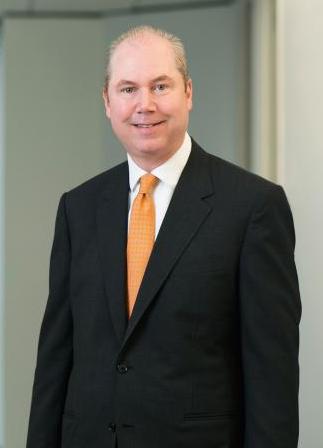

Charlotte Rasche has been through a few mergers and acquisitions at Prosperity Bancshares Inc., first when she practiced at Bracewell and later as the bank’s general counsel.
But none of the deals was as big – or as monumental – as the Houston bank’s $2.1 billion purchase of Plano-based LegacyTexas, which was the second largest bank merger in Texas history at the time and created the second largest bank by deposits headquartered in the state.
“It was Prosperity’s 43rd acquisition and the 30th-plus transaction since I began working with them in the late 1990s,” she said. “But it was the largest in terms of size and relative size to Prosperity.”
It also was a fast transaction, keeping Rasche and her team up late at night and up early in the morning and engaged in conference calls on the weekend.

“While it was challenging, there was adrenaline going and everyone was working hard,” she said. “But it didn’t feel like such hard work. It’s what we do.”
The transaction landed Rasche and her lead outside counsel, Bracewell partner Will Anderson, as finalists for the M&A Deal of the Year by the Dallas-Fort Worth Chapter of the Association of Corporate Counsel and The Texas Lawbook. The two organizations will present the award Jan. 30 at the George W. Bush Institute.
Rasche led the LegacyTexas deal with help from associate general counsel Annette Tripp and legal counsel Jessica Lee Freedson, turning to Anderson and Bracewell partner Jason Jean in Houston for outside help (Bracewell has advised the bank since its founding in 1983).
“You can’t just linger over $10 billion and take on all that overhead, especially if you’re publicly traded. That’s where the pressure comes in for institutions.” — Charlotte Rasche
LegacyTexas’ legal work was led by then-COO and general counsel Scott Almy, who tapped attorneys from Shapiro Bieging Barber Otteson out of Denver. The deal closed Nov. 1.
Prosperity and LegacyTexas had been talking about a possible combination for around two years. But discussions didn’t get serious until LegacyTexas began to approach the $10 billion asset mark, when banks are subject to additional regulations that can be costly.
“We dated for two years,” Almy said in an interview with The Texas Lawbook. “We evaluated other opportunities during that period, but after the BB&T and SunTrust merger was announced (in February), it jumpstarted and accelerated our discussions.”
Rasche said LegacyTexas was looking to either “make a big splash over $10 billion” or combine with a larger institution.
“(CEOs) David (Zalman) and Kevin (Hanigan) started talking again, and the executive and management teams got together at the end of March to discuss more about what the deal would look like and began some due diligence,” she said. “We took our time and got to know each other. And by the end of May, we submitted a revised offer to Legacy.”
The institutions hired bankers – JPMorgan’s Travis Machen in New York for LegacyTexas and Keefe Bruyette & Woods’ Craig McMahen in Austin for Prosperity – and the two sides got to work. The deal was announced June 17.
“There was not a lot of time for negotiation and documents,” Rasche said.
She and Almy worked very closely negotiating some of the commercial terms to get issues resolved.
“It’s easier when you go business person-to-business person without going through the firms – we had an open phone line,” she said. “I would say that everyone worked well together, including with Scott and his team. Everyone had a common goal and we worked toward that.”
Rasche said everyone was working different aspects, with Tripp – who was experienced in banking M&A – taking a big role (she also previously practiced at Bracewell).

“We were so busy on a lot of different things going on – diligence, deal terms, investor presentations. So a lot of legal detail fell to Bracewell, including the drafting of the agreement, the research and ways we could structure things,” she said. “Bracewell would say, ‘We need to do x, y and z,’ and we would say, ‘We’ll do that.’ “
Because both banks were public companies, there also were a lot of Securities and Exchange Commission regulations to adhere to – and it had been a while since the bank had bought a public entity (SNB Bancshares Inc. in 2006 and Texas United Bancshares Inc. in 2007).
“With two public companies coming together, there was the usual litigation that resulted from that,” Anderson said. “We dealt with that quickly and got it resolved.”
Rasche explained. “There’s a gentleman (Barry Simmons) who protests every merger in Dallas and Houston, saying banks don’t do enough for African Americans,” she said. “He’s protested every one of our transactions and has a history with regulators.”
Anderson said the Prosperity team did a lot of work on the legal and financial due diligence, negotiated the commercial terms and pricing, handled the social issues and interfaced with bank regulators, talking with them in advance of a transaction.
“We were in the background for a while,” Anderson said. “But once they were close to a deal, we came in and helped with the merger agreement and regulatory matters (including Houston partner Josh McNulty) and brought the full team in terms of specialists, with over 20 lawyers working on the deal in Dallas, Houston, Austin and New York.”
Rasche said the biggest challenges were the time issue and the attention the deal might receive. “We thought the transaction would get a lot of scrutiny, and it did,” she said.
What does the transaction say about dealmaking in the banking industry? Rasche said it shows what regulation has done for the ability for institutions to compete at smaller scale – and the cost of compliance once a bank hits $9 billion or $10 billion in assets.
“Regulators want you to get ready when you cross $8 billion,” she said. “David (Zalman) said when we went over $10 billion, it was like someone hit him over the head with a baseball bat.”
Rasche said Prosperity’s compliance department went from five people to 40 after it went over $10 billion in assets and its audit department went from two to 20-plus with the addition of LegacyTexas.
“You can’t just linger over $10 billion and take on all that overhead, especially if you’re publicly traded,” she said. “That’s where the pressure comes in for institutions.”
She added that for smaller banks, there are several different factors that go into considering M&A, including aging ownership and lack of succession planning as well as the costs of competing. “The ability to make money for these institutions is driving M&A,” she said. “The best thing to do is partner up with someone.”
Anderson said he’s seen a lot of consolidation in the community bank space and expects to see more. “Some of them will go public, like Green Bank, and then they will do M&A, like Green Bank did with Veritex, to create a larger institution,” he said. “And there are newer banks coming online that will eventually consolidate.”
Rasche said Prosperity is always looking at doing further deals – with an emphasis on targets in Texas and possibly even adjoining states, the Midwest and southeast – but will have its hands full for a while integrating LegacyTexas.
“This is the first transaction that we haven’t done the operational integration in the same quarter we closed the merger,” she said. “As you increase in size, the ability of your tech providers to provide that scale of computer conversion – and other projects we had in place – drove us to do the operational integration in early June. Everything seems to be going well.”
Meanwhile, Almy – who helped Hanagan take LegacyTexas from a market capitalization of $300 million and assets of $2.7 billion to a market cap of $2.2 billion and $10 billion in assets – has been hired as CEO of a new entity that’s in the midst of doing a bank acquisition itself. “The transaction will transform a decades-old company,” he said.
Going forward, Rasche said Prosperity plans to continue to focus on the complete banking relationship with its customers, providing them with deposit services and loans as well as trust and wealth management services.
“We don’t have any intention of doing anything creative,” she said. “We will focus on what we can do to improve our relationships with customers and grow the businesses we already have.”
